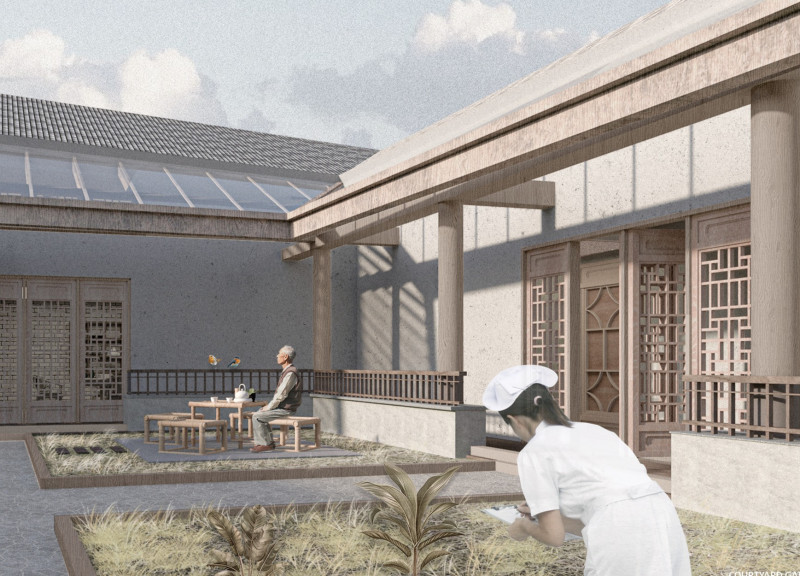5 key facts about this project
The architecture employs an innovative approach to spatial organization, utilizing open-plan layouts that encourage flexibility within the spaces. This adaptability supports a variety of functions, from private living areas to communal meeting spots, thus fostering community engagement. The flow between these spaces is carefully designed to enhance movement and connectivity, offering users a sense of continuity within the structure.
The design incorporates a variety of materials, each chosen for their aesthetic qualities and practical attributes. Predominantly featured are locally sourced bricks, which lend a warm, tactile quality to the exterior facades. This use of brick not only ties the project to its cultural context but also contributes to its sustainability by minimizing the environmental impact through reduced transportation costs. Additionally, large expanses of glass are incorporated into the design, allowing natural light to penetrate deep within the interior spaces. The transparency created by these glass elements establishes visual links between the inside and outside, blurring the boundaries and inviting the surrounding landscape into the users’ daily experience.
Unique design approaches are evident in the incorporation of green roofs and vertical gardens, which serve multiple purposes. These features not only enhance the aesthetic appeal of the building but also contribute to improved air quality and promote biodiversity in an urban setting. Moreover, the green roofs assist in managing stormwater runoff, showcasing the project’s commitment to sustainable practices and environmental stewardship.
Attention to detail is paramount throughout the design. The careful execution of architectural elements, such as the alignment of windows and the thoughtful consideration of overhangs, reflects a deep understanding of light and shadow dynamics, creating a dynamic play of natural light within the spaces throughout the day. Furthermore, the use of warm-toned finishes and textures within the interiors fosters an inviting atmosphere that enhances user comfort.
The architectural plans of this project reveal an intricate understanding of zoning and functionality, ensuring that each area serves a distinct purpose while contributing to the overall cohesion of the design. The architectural sections illustrate the height dynamics within the space, demonstrating how verticality is utilized to create a sense of openness.
In summary, this architectural design represents a thoughtful exploration of modern living, balancing individual needs with community-oriented spaces. The comprehensive attention to materiality combined with innovative design elements produces a functional yet aesthetically pleasing environment that resonates with its users. The project stands as a testament to contemporary architectural principles grounded in sustainability and social responsibility. Readers interested in a deeper exploration of this architectural endeavor are encouraged to delve into the architectural plans, sections, and designs available for a more comprehensive understanding of the intricate ideas and concepts that shape this project.























